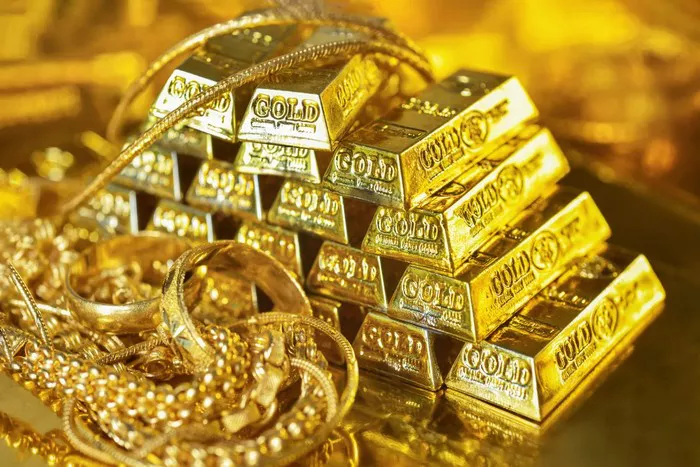Gold prices continue to attract attention as safe-haven demand rises amid growing geopolitical tensions, particularly the escalating Iran-Israel conflict. Market sentiment remains cautious, with investors closely watching the U.S. Federal Reserve’s upcoming policy meeting on June 18 for signals regarding potential interest rate cuts.
Maneesh Sharma, AVP – Commodities & Currencies at Anand Rathi Shares and Stock Brokers, stated that gold ended last week with notable gains, supported by increased speculation of a Federal Reserve rate cut and heightened uncertainty in the Middle East. Despite the release of strong U.S. economic data, investors prioritized geopolitical risks, pushing gold prices higher.
In a significant development, gold has overtaken the euro to become the world’s second-largest reserve asset. According to data, gold now comprises 19.6% of global reserves, surpassing the euro’s 15.9%. This shift is attributed to a surge in central bank purchases and the precious metal’s soaring value.
A recent survey by the World Gold Council revealed that 95% of central banks anticipate an increase in global gold reserves over the next 12 months. Notably, 43% of respondents expect their own gold holdings to rise, while none foresee a decline.
Meanwhile, U.S.-China trade relations remain strained despite a temporary truce. China continues to restrict exports of rare earth metals used in American defense systems, maintaining a strategic pressure point in the global supply chain.
Looking ahead, markets will closely monitor any further developments in the Middle East, along with central bank decisions across major economies. The Bank of Japan has reportedly held off on raising interest rates this year, citing uncertainty over U.S. tariff policies.
All eyes are now on the Federal Reserve’s June 18 meeting. Analysts suggest that the outcome—particularly the dot plot projections and Chair Jerome Powell’s tone—could shape the trajectory of gold for the remainder of 2025. While immediate rate changes are unlikely, markets are pricing in two possible rate cuts in the latter half of the year, contingent on inflation data.
On the domestic front, rising crude oil prices could exert pressure on the Indian rupee, potentially keeping local gold prices elevated. Technically, gold remains bullish with potential for a breakout to new all-time highs in the spot market. However, volatility and profit-booking could emerge at higher levels.
Key support for gold stands near $3,360 per ounce. A sustained drop below this level could lead prices to test lower support zones between $3,280 and $3,250.
In summary, while the outlook for gold remains strong in light of geopolitical uncertainty and dovish monetary expectations, market participants should brace for continued volatility in the short term.


